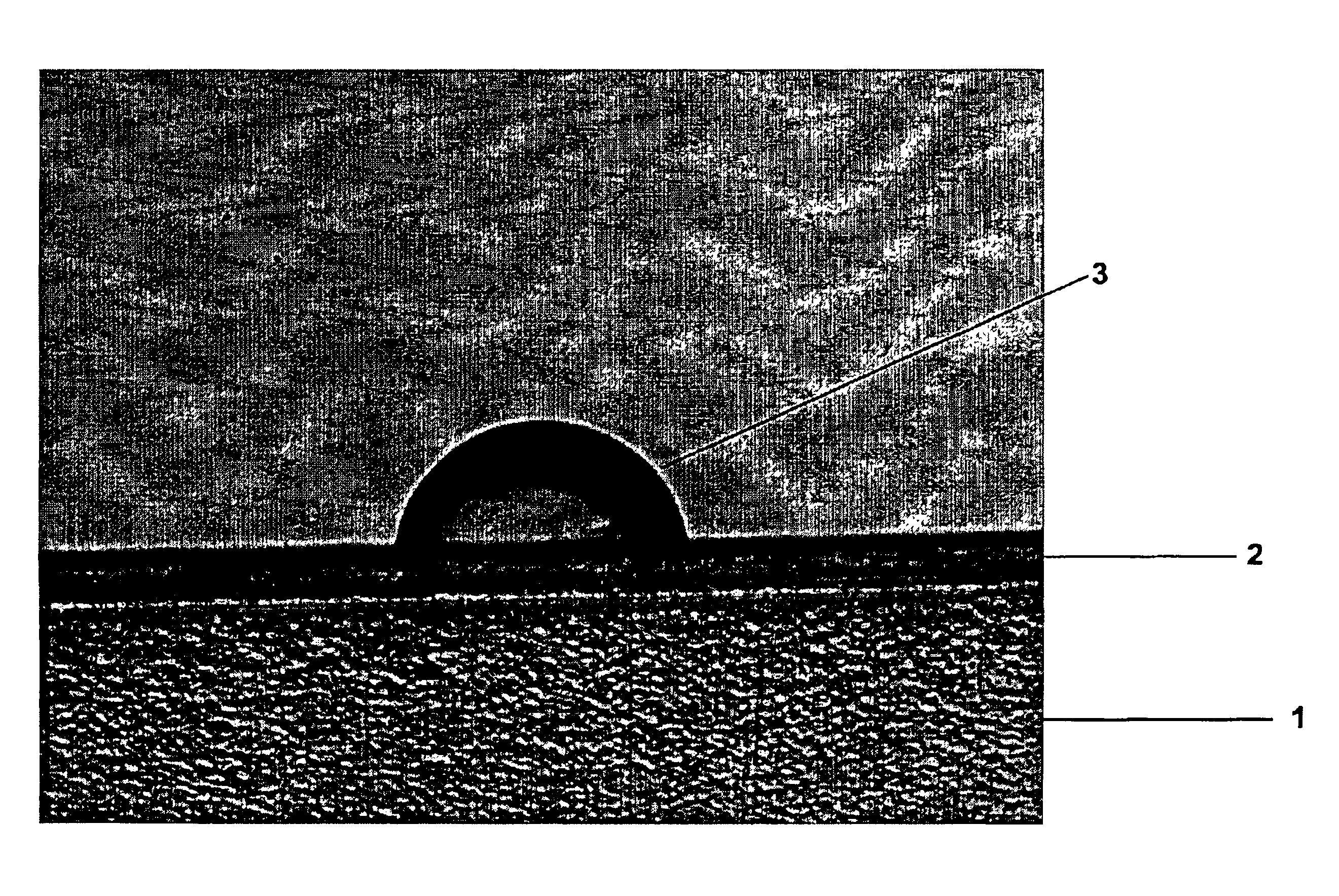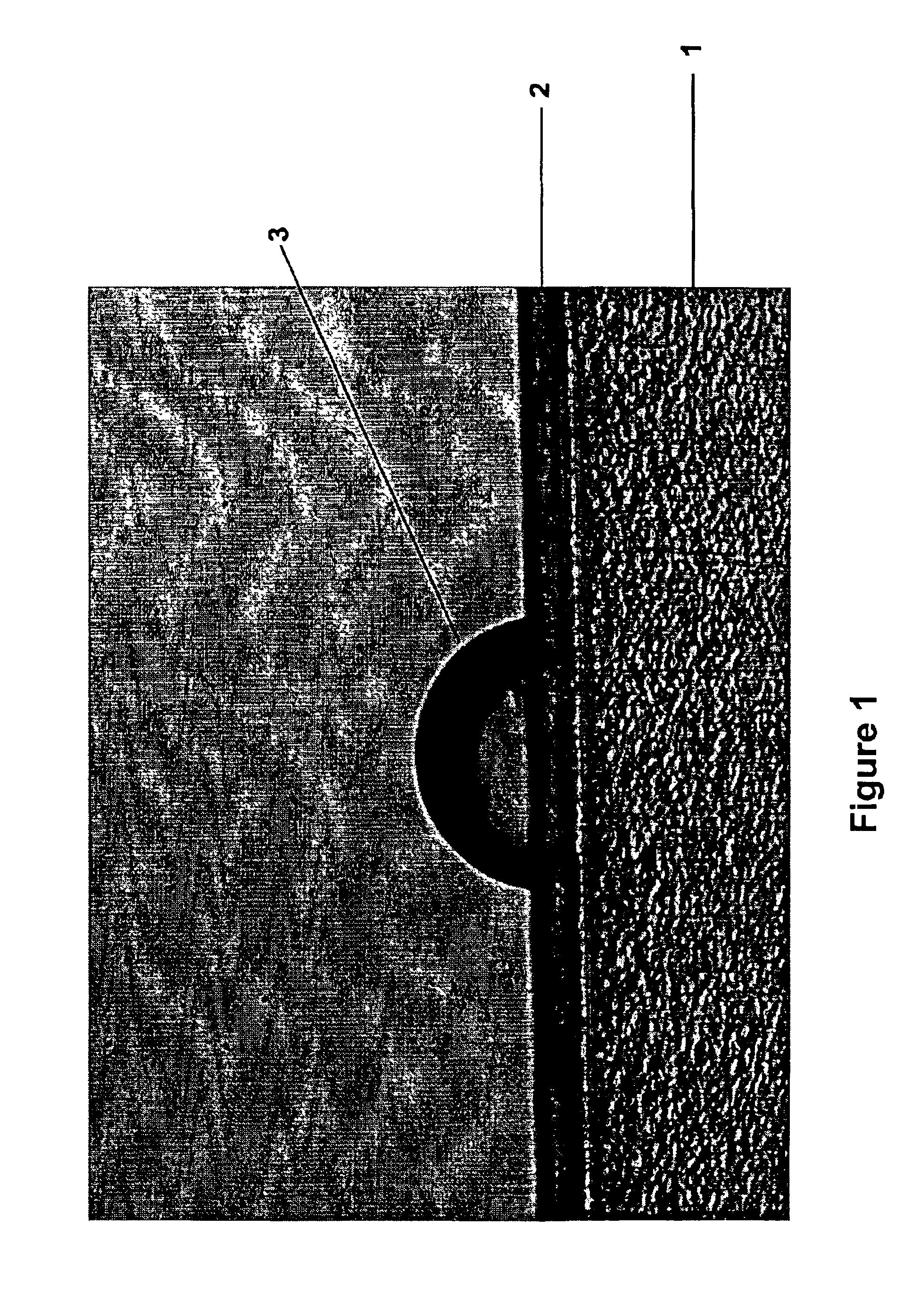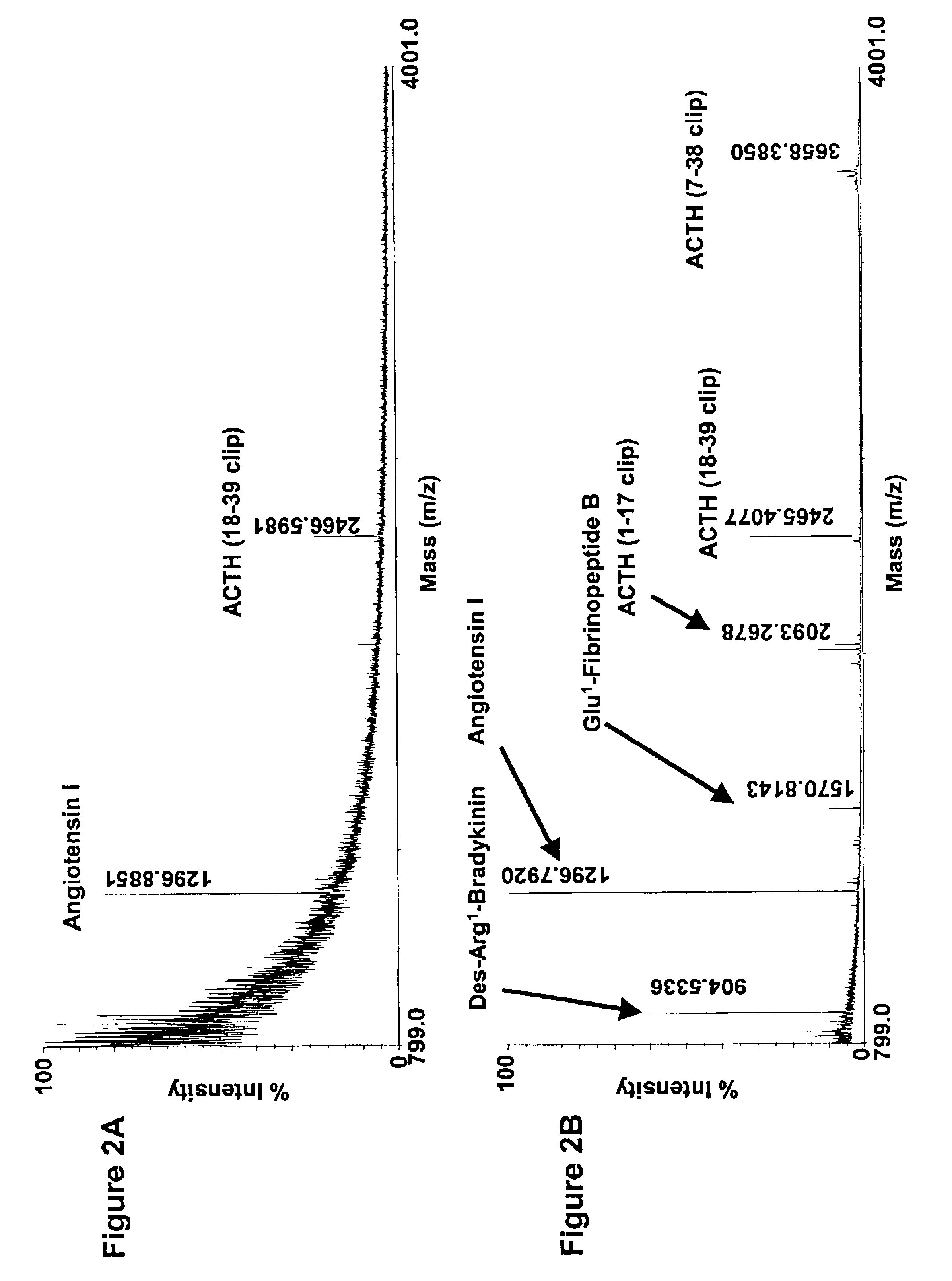MALDI plate and process for making a MALDI plate
a technology of maldi plates and maldi plates, applied in the field of maldi plates and process for making maldi plates, can solve the problems of increased probability of striking, unsatisfactory coating of previously wetted areas, and undesirable area reduction, and achieve the effect of creating and restoring the surface hydrophobicity of sample plates
- Summary
- Abstract
- Description
- Claims
- Application Information
AI Technical Summary
Benefits of technology
Problems solved by technology
Method used
Image
Examples
example 1
[0039]A MALDI stainless steel 2.25″×2.25″ rectangular plate having a mirror finish was sprayed with 60 micrograms of paraffin in 50 microliter of hexane / heptane (50:50 v / v). The resultant surface was uniformly coated with paraffin, 20 nm thick.
[0040]A sample of 1 μl mixture containing 100 amols of des-Arg1-Bradykinin, Angiotensin I, Glu1-Fibrinopeptide, and various ACTH clips: 1-17, 18-39 and 7-38 in 50% acetonitrile / water (v / v) with 0.1% TFA and 5 mg / ml alpha cyano-4-hydroxy cinnamic acid was deposited on the coated surface to produce a droplet having a contact angle of about 90°.
[0041]The sample plate then was inserted into a Voyager MALDI apparatus available from Applied Biosystems, Framingham, Mass. and this sample was analyzed by a MALDI-TOF process. This analysis was compared to an analysis of the same aqueous sample deposited on an uncoated stainless steel sample plate of the same dimension as set forth above and having a mirror finish.
[0042]The resultant analysis with the un...
example 2
[0043]A MALDI stainless steel 2.25″×2.25″ rectangular plate having a mirror finish was sprayed with 60 micrograms of paraffin in 50 microliter of hexane / heptane (50:50 v / v) minutes. The resultant surface was uniformly coated with paraffin, 10 nm thick.
[0044]A sample of 1 μl mixture containing 100 fmols of trypic digest of β-galactosidase in 50% acetonitrile / water (v / v) with 0.1% TFA was deposited on the coated surface to produce a droplet having a contact angle of about 90°.
[0045]The sample plate then was inserted into an Applied Biosystems 4700 Proteomics Analyzer available from Applied Biosystems, Framingham, Mass., and this sample was analyzed by a MALDI-MS / MS process for the parent ion of selected digestion fragment (1394 Da). This analysis was compared to an analysis of the same aqueous sample deposited on an uncoated stainless steel sample plate of the same dimension as set forth above and having a mirror finish.
[0046]The resultant analysis with the uncoated plate is shown in ...
example 3
[0047]A MALDI stainless steel 2.25″×2.25″ rectangular plate having a mirror finish was prepared by scrubbing the plate with a 10% solution of RBS-35 in water, rinsing with water and drying with lint free tissue. The plate was polished with a minimum amount (bead the size of a pin head) metal polish that was comprised of white spirits, kerosene (petroleum), coco fatty acid diethanol amide, aluminum oxide, ammonia solution and water. On complete removal of the haze and when no black residue was detected on a clean lint free tissue the plate was washed with isopropanol and dried by blowing air across the plate.
[0048]A sample of 10 fmol of des-Arg1-Bradykinin, Angiotensin I, Glu1-Fibrinopeptide, and various ACTH clips: 1-17, 18-39 and 7-38 in 50% acetonitrile / water (v / v) with 0.1% TFA and 5 mg / ml alpha cyano-4-hydroxy cinnamic acid was deposited on the polished surface to produce a droplet having a contact angle of about 90°.
[0049]The sample plate then was inserted into an Applied Biosy...
PUM
| Property | Measurement | Unit |
|---|---|---|
| thickness | aaaaa | aaaaa |
| thickness | aaaaa | aaaaa |
| thickness | aaaaa | aaaaa |
Abstract
Description
Claims
Application Information
 Login to View More
Login to View More - R&D
- Intellectual Property
- Life Sciences
- Materials
- Tech Scout
- Unparalleled Data Quality
- Higher Quality Content
- 60% Fewer Hallucinations
Browse by: Latest US Patents, China's latest patents, Technical Efficacy Thesaurus, Application Domain, Technology Topic, Popular Technical Reports.
© 2025 PatSnap. All rights reserved.Legal|Privacy policy|Modern Slavery Act Transparency Statement|Sitemap|About US| Contact US: help@patsnap.com



